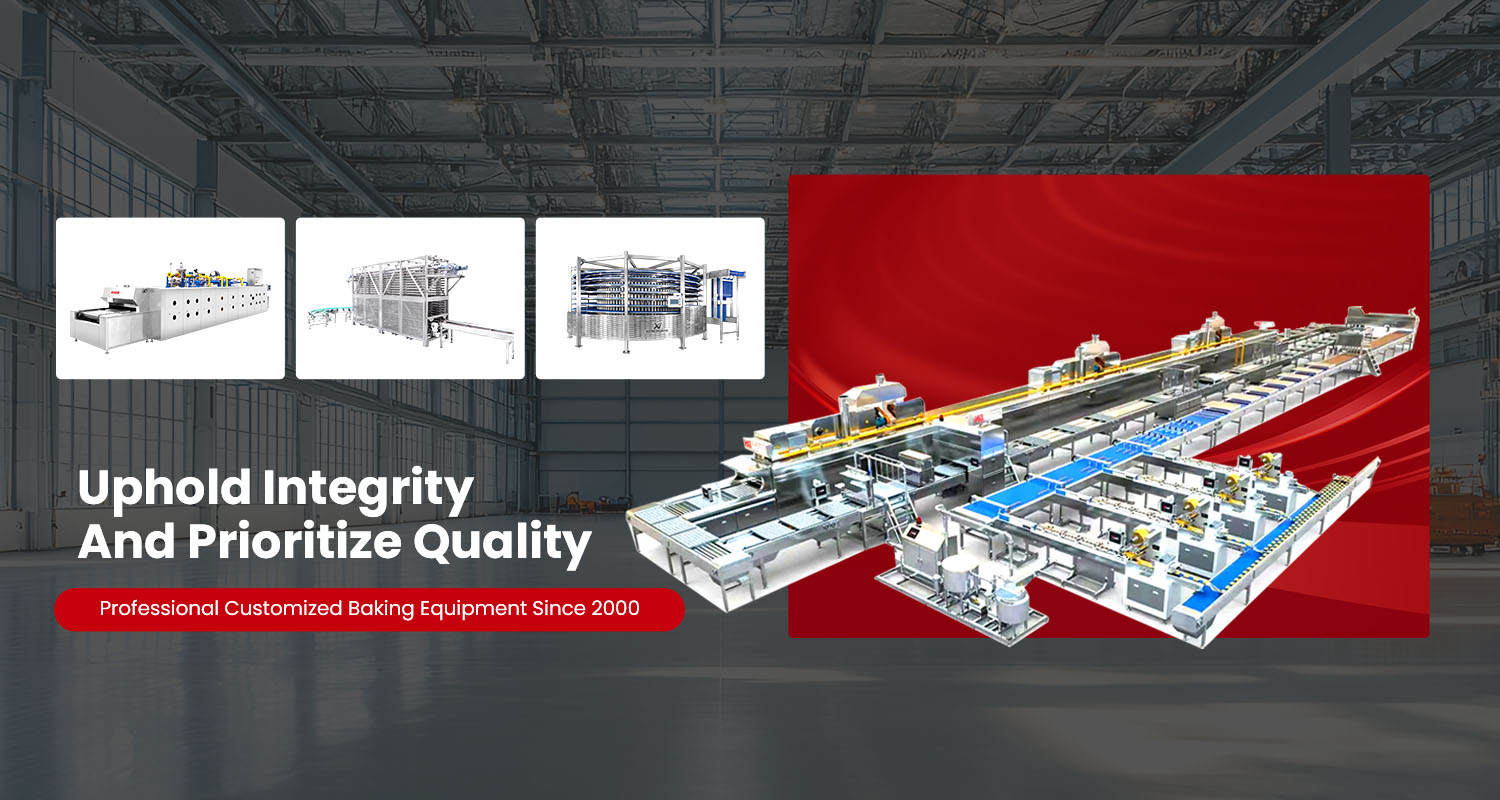How Much Energy Can Smart Bakery Equipment Save?
In today’s baking and bakery-transportation industry, energy costs and sustainability pressures are rising. Smart equipment—combining automation, digital control, heat recovery, and intelligent scheduling—offers a pathway to reduce energy consumption while improving throughput and reliability. This article explores how much energy can be saved by deploying smart bakery systems in baking and transport (in-plant conveying), and why adopting solutions like KC-SMART is worth considering.
Energy consumption profile in baking & transport workflows
In a typical industrial bakery, heating (ovens), cooling (spiral coolers, refrigeration), dough handling, conveyors, and air handling are major energy consumers. Studies in the food industry show that energy-related costs may account for 20% to 50% of total production costs.
In the bakery domain:
Ovens (thermal energy) are among the dominant loads.
Heat losses through exhaust, chamber walls, flue gases are significant.
Conveyors, fans, motors, control systems consume electricity.
Cooling systems and refrigeration often run continuously.
Thus smart control, demand shifting, and efficiency upgrades can yield meaningful savings.
Typical energy savings from smart bakery systems
Based on industry reports and case studies, smart bakery equipment can reduce energy use in the following ranges:
| Technology / Measure | Typical Energy Saving |
|---|---|
| Intelligent sorting / conveyor lines | ~ 20 % vs traditional lines |
| Hybrid ovens, better heat insulation & switching modes | 20 %–30 % reduction |
| Waste heat recovery & reuse (e.g. exhaust → water heating) | Up to ~ 25 % improvement in overall plant energy efficiency |
| Automated scheduling, dynamic load management, process optimization | Additional marginal savings (5 %–10 %) depending on usage patterns |
| Motor & drive upgrades, variable frequency control, motor optimization | 10 %–15 % for auxiliary systems in many food plants |
In sum, combining multiple strategies, a modern smart bakery or bakery transport line might realistically target 20 % to 35 % total energy reduction (compared to older or unsophisticated systems). In exceptional cases (very inefficient legacy systems) the gain could approach 40 %.
Why smart transport / conveying matters
In a baking transport/logistics context (moving dough, baked goods, trays), energy is not just about ovens; conveyors, spiral elevators, cooling towers, fans, and control systems all consume. Smart conveying systems optimize speed, stop-and-go, idle times, and fan motor loads.
For example, KC-SMART’s Automatic Sorting Line claims energy savings of around 20% relative to traditional sorting systems through advanced drive technology and energy management.
Thus, even the “non-baking” parts of a bakery production line have substantial energy-saving potential when upgraded to smart systems.
Key factors that influence achieved savings
The actual energy saved depends substantially on:
Baseline efficiency – Older, poorly maintained systems offer more room for improvement.
Load profile & production schedule – More variable production schedules allow more leverage for shifting loads to off-peak times.
Degree of automation & control granularity – The more real-time feedback and control, the more waste can be trimmed.
Integration & heat reuse – If waste heat is captured and reused (e.g. preheating, dough water, space heating), savings compound.
Scale and throughput – Larger plants with continuous operation can amortize smarter equipment and get higher absolute savings.
Maintenance & reliability – Smart systems must be reliable; energy losses from downtime or malfunctions must be minimized.
Example narrative: savings in a smart bakery line
Imagine a medium-scale bakery with older ovens, manual conveyors, and continuous cooling. After retrofitting:
Ovens switch into hybrid mode, better insulation, smart temperature control → 25% fuel/energy cut
Conveyors upgraded to variable speed drives and load-sensing control → 15% lower motor consumption
Waste heat from oven flue gas is captured to preheat water/dough → 10 % net reduction in thermal consumption
Cooling fans and ventilation are dynamically controlled (only run when needed) → 8–12% saving
Optimized scheduling (avoid running everything at peak times) → an extra 5%
Total blended saving might approach 30% on energy bills. Over a year, that could translate into tens or hundreds of thousands of dollars (or more, depending on scale).
Why adopt KC-SMART equipment
If you're selecting a smart baking system provider, KC-SMART (via JM-KC / jm-kc.com) is one of the notable options. Their offerings include Spiral Cooling Towers, gas-fired tunnel ovens, Fermentation Towers, dough systems, and automatic sorting lines. Their automatic sorting line explicitly states a ~20% reduction in electricity consumption compared to traditional designs.
By choosing a comprehensive solution provider like KC-SMART, you can ensure integration across ovens, conveyors, cooling, and control systems—crucial for achieving cumulative energy savings.
Conclusion & recommendations
Smart bakery equipment can realistically deliver 20–35% energy savings in a baking & transport environment if well designed and deployed. The savings come both from more efficient thermal systems (ovens, waste heat reuse) and smarter electric systems (conveyors, fans, control).
To maximize impact:
Start with an energy audit to identify the worst inefficiencies.
Retrofit or replace legacy systems in phases.
Ensure your control systems are data-driven and responsive.
Recover waste heat wherever possible.
Work with an integrated supplier—like KC-SMART—to ensure end-to-end compatibility.
Such investments not only reduce costs, but improve sustainability, competitiveness, and resilience in an industry where energy pressures will only grow.






